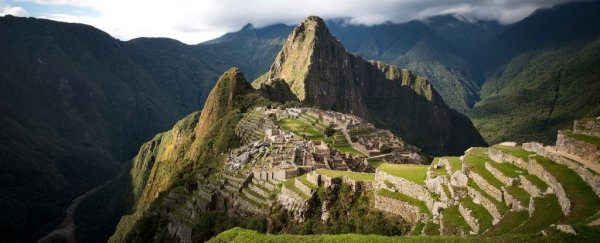The history of the Incas was written by their conquerors, and as we're coming to find out, the story we know is not necessarily accurate.
Modern radiocarbon dating now suggests Machu Picchu is at least two decades older than historical records have indicated.
According to interpretations of 16th century documents by the American archaeologist and anthropologist John Rowe, this high-altitude citadel was built for the Inca Emperor Pachacuti, shortly after he rose to power in AD 1438.
This date has served as a baseline for the construction of Machu Picchu since Rowe's work was published in the 1940s - repeated in textbook after textbook. Yet it seems he may have read a little too much into those historical texts.
Now, the dating of human bones and teeth buried at the sacred site indicates Machu Picchu was already occupied by AD 1420, which means it was probably built earlier than that.
"This is the first study based on scientific evidence to provide an estimate for the founding of Machu Picchu and the length of its occupation, giving us a clearer picture of the site's origins and history," says anthropologist Richard Burger from the University of Yale.
Machu Picchu is one of the most famous archaeological sites in the world, yet its exact purpose and reason for decline have been largely speculative. With the death of the last Inca monarch in the late 16th century, the city fell into abandon, only coming to the attention of Western historians in 1911.
For decades, scientists have been trying to reconstruct the history of this impressive royal estate, and yet the technology we need to discern its actual age hasn't been available until recently.
Modern advances in accelerator mass spectrometry (AMS) have finally allowed us the chance to get a proper date - one that isn't based on colonial interpretations.
In total, researchers analyzed 26 samples of human bone and teeth, which were buried at various cemeteries around Machu Picchu. Together, these remains represent more than 10 percent of all individuals laid to rest at the site.
The bones show little sign of hard labor, which means these individuals probably weren't there to build Machu Picchu. It was most likely their home.
"At least two of the individuals studied were interred at Machu Picchu before AD 1440 with a probability of 95.4 percent and, judging from the medians of the radiocarbon measurements, it appears that the country palace at Machu Picchu was functioning by AD 1420, if not earlier," the authors write.
If the findings are verified with further radiocarbon dating, it could mean the traditional estimates for Pachacuti's rise to power are several decades off.
Recent radiocarbon dating in the nearby capital city of Cuzco also suggests this might be the case.
If Pachacuti really did take the throne in 1438 and Machu Picchu really was built for him, then the site could not have been occupied any sooner than 1440, and more likely 1450, researchers say. Especially since the emperor would first need to conquer the mountain region before building his royal estate.
But the bodies buried at Machu Picchu do not seem to match that timeline. Their ages instead suggest Machu Picchu was consistently occupied between 1420 and 1530. And while radiocarbon dating has its limits, so, too, do historical accounts.
"[P]erhaps the time has come for the radiocarbon evidence to assume priority in reconstructions of the chronology of the Inca emperors and the dating of Inca monumental sites such as Machu Picchu," the authors suggest.
The study was published in Antiquity.
